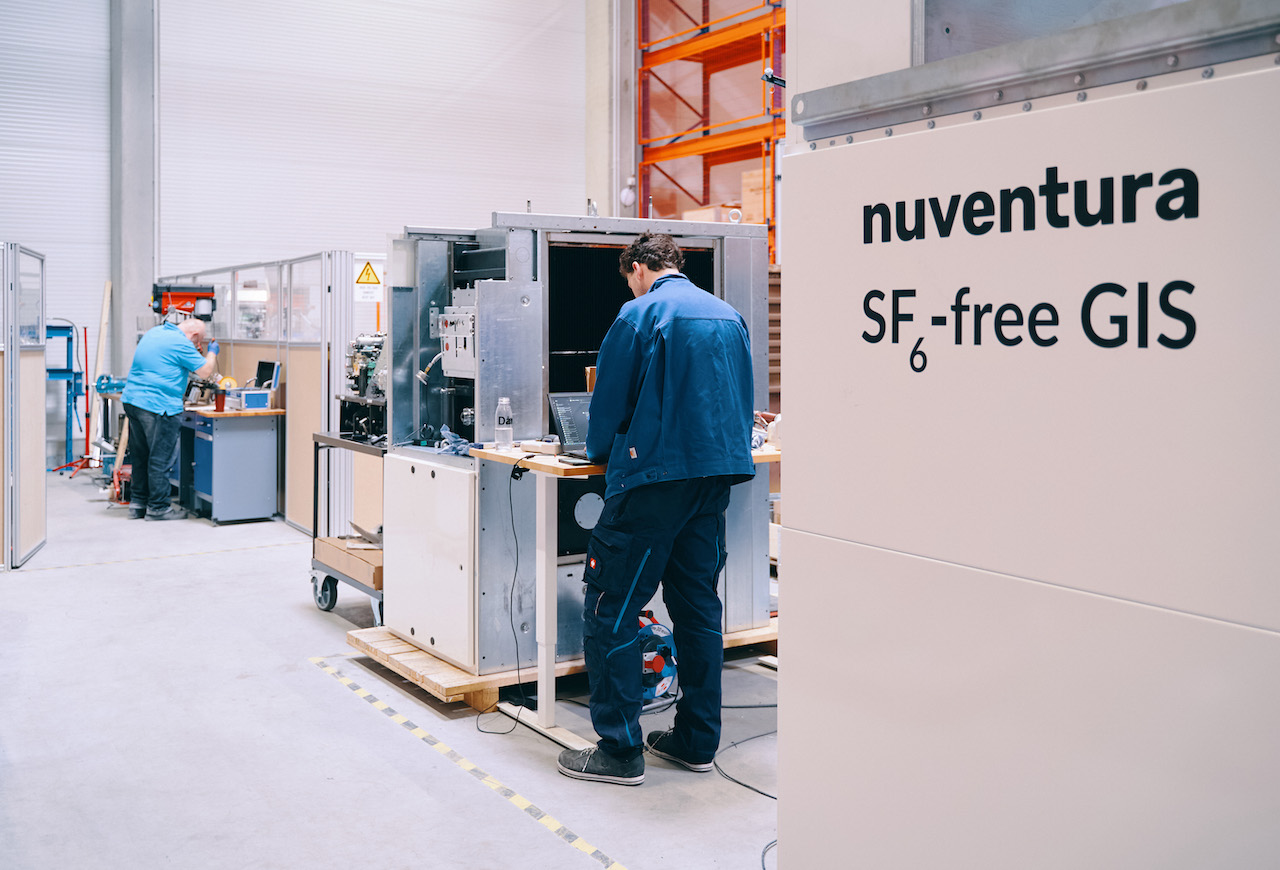With 25,200 times more global warming potential than CO2, sulphur hexafluoride (SF6) is the strongest greenhouse gas in the atmosphere and emissions are rising.

French impact investor Mirova, part of the Natixis Group, have led a €25m Series A funding round in Berlin-based Nuventura, which develops sulphur hexafluoride (SF6)-free gas insulated switchgear (GIS) technologies for electric power systems, replacing SF6 with dry air.
The investment was made through the Mirova Environment Acceleration Capital fund alongside new investors Forward One, a Dutch VC investor specialising in industrial hardware, and EIC Fund, the venture investment fund of the European Innovation Council. Existing investors IBB Ventures, ADB Ventures, Cycle Group, Future Energy Ventures, and DOEN Participaties also took part in the funding round.
This latest investment brings total investment in Nuventura since its launch in 2017 to more than €35m.
According to research from the Intergovernmental Panel on Climate Change although SF6 exists in relatively minor concentrations in the atmosphere it has 25,200 times more global warming potential than CO2, making it the strongest greenhouse gas in the atmosphere.
Anne Boulet, investment manager at Mirova, commented: “The purpose of Mirova’s environmental impact strategy is to foster the growth of innovative companies having a positive environmental impact. As the drive towards a progressive SF6 phase out is increasing, we are thrilled to have been given the opportunity to support Nuventura’s great team in their international expansion and as such actively contribute to decarbonising the energy industry.”
Nuventura said financing would be used towards expanding its product portfolio and to further develop its manufacturing capabilities around the world, especially in Asia.
Responding to questions from Impact Investor, Fabian Lemke, CEO and co-founder of Nuventura, said: “We are expanding our dry-air switchgear product portfolio to address more use-cases and geographic requirements. For example, we are developing a technology for the North American and Chinese markets, as well as a ring main unit (a factory assembled, metal enclosed set of switchgear used at the load connection points of a ring-type distribution network) – a more mass market technology.”
Service offering
Nuventura’s first technology offering Nu1 is an IEC (International Electrotechnical Commission) -approved medium voltage (up to 36 kV), single busbar (the metallic bar in a switchgear panel used to carry electric power) GIS for primary distribution. Primary distribution refers to the distribution system that interfaces with higher-capacity transmission lines (in substations) before being delivered through lower capacity transmission lines to customers (secondary distribution).
The company has been commercialising its technology since 2020 by licencing the full dry air GIS design to switchgear manufacturers or by selling them the GIS core tanks to incorporate into their own switchgear designs.
But Lemke said the company was now moving away from licensing the full design and moving to selling primary panels, and core tanks, also known as modules.
“Core tanks are essentially the heart of the switchgear and serve the most important technical function, of interrupting currents and avoiding internal arcs, in other words, catastrophic explosions,” he explained.
The company’s customers include EPCs (engineering, construction and procurement companies), switchgear panel builders and OEMs (original equipment manufacturers).
“However, it is important to mention that we are also able to deliver turnkey projects for pilots, and in this case our customers are switchgear end-users such as utilities, renewable project developers and industry-users,” added Lemke.
World’s strongest greenhouse gas
Lemke said that SF6 was widely used across the power industry in switchgear, such as in large power stations, wind turbines and electrical substations.
He explained the power industry accounted for up to 80% of its use, but that it was also used in magnesium production, semiconductor manufacturing, medical imaging as well as in military applications such as missiles. The gas has also been historically used in Nike Air trainers, tennis balls and even window insulation and Lemke said its use globally was on the rise.
“Annual global emissions are around 8,100t, which is equivalent to the yearly CO2 emissions produced by up to 100 million cars. Moreover, SF6‘s installed base is expected to grow by 75% by 2030 from 2019 levels,” said Lemke. ”One underappreciated fact around SF6 is that though recycling of used SF6 is common practice in developed countries, it is usually not destroyed because of the difficulty and cost associated with destruction. Therefore, it can be expected that SF6 that exists now and that is produced in the future will persist for thousands of years, whether in switchgear equipment or, ultimately, in the atmosphere.”






